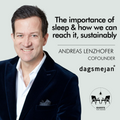Continuing from the previous article, one can clearly see how pandemics and wars can affect the fashion trends of the time. As fashion grew into an increasingly significant role player in society, the impact that later wars and more recent social justice movements have had on trends is clear.
Let's continue our exploration of the past and into the present, where fashion goes as far as to represent identity, solidarity, and the fight for social justice...
WORLD WAR II
The Second World War caused Britain to implement a system of rationing raw materials and goods. These rations extended past groceries, including purchasing power of other products like clothing and accessories. The intention behind the rations and coupons was that there would be a limit in raw materials and resources, and a need for the labour force to focus on production for the war efforts. Rationing out of clothing coupons resulted in a campaign known as “Make Do and Mend”, implemented to encourage women to repair their damaged clothing items instead of disposing of them and purchasing new ones. This campaign was among the first signs of the present-day “reduce, reuse, recycle” mentality.
The Second World War caused Britain to implement a system of rationing raw materials and goods. These rations extended past groceries, including purchasing power of other products like clothing and accessories. The intention behind the rations and coupons was that there would be a limit in raw materials and resources, and a need for the labour force to focus on production for the war efforts.
Rationing out of clothing coupons resulted in a campaign known as “Make Do and Mend”, implemented to encourage women to repair their damaged clothing items instead of disposing of them and purchasing new ones. This campaign was among the first signs of the present-day “reduce, reuse, recycle” mentality.
Another motion to reduce the amount of labour and resources spent on clothing was the Making-up of Civilian Clothing Order. This was a restriction implemented by the British Board of Trade in 1942 and 1943, preventing the “austerity” of clothing manufacturing. This created guidelines for the production of clothing so as to limit the amount of resources and labour used, and not distract from the production needs of the war. Limiting the amount of pockets in garments, reducing men’s coats to single-breasted (from double-breasted) designs, and banning elastic waistbands due to the short supply of elastic became commonplace. Another adjustment included making underwear, nightdresses, and wedding dresses out of parachute silk due to reductions in silk production during the war.
Image from WikiMedia
The war didn’t only affect the limits of resources and materials. The style of fashion changed too, suiting the time, with a more utility-inspired look becoming popular. With most production focusing on uniform production for soldiers, it bled into the manufacturing of civilian clothing too. This not only led to tailored uniform-inspired fashion, but also the subsequent quality of the products increased. Quality controls became stricter to ensure that the products would last longer for people, diminishing the need for constant replacing. Only a limited selection of high quality fabrics was made available for clothing production, ensuring that clothes would retain their longevity without straining the production process.
SOCIAL REVOLUTIONS
While the colors of red, white and blue are commonplace for clothing these days - and hardly hold much political or ideological implications - there was a time when they held so much more significance than just a fresh summery color palette.
FRENCH REVOLUTION
The French Revolution split the French population over a period of radical ideals and tumultuous violence. Revolutionaries become recognisable by their pleas for “Liberté, Egalité, Fraternité” and, more interestingly, by their tendency to the Tricolore. The three colors of the revolution - red, white and blue - became symbolic of one's support of the movement. If seen wearing any of these three colors during the period of unrest, one was immediately considered a supporter of the revolutionaries. While abhorrent at the time, the eventual success of the French Revolution led these three colors to become a fashionable combination, integrated into everyday clothing and accessories.
Rationing out of clothing coupons resulted in a campaign known as “Make Do and Mend”, implemented to encourage women to repair their damaged clothing items instead of disposing of them and purchasing new ones. This campaign was among the first signs of the present-day “reduce, reuse, recycle” mentality.
Another motion to reduce the amount of labour and resources spent on clothing was the Making-up of Civilian Clothing Order. This was a restriction implemented by the British Board of Trade in 1942 and 1943, preventing the “austerity” of clothing manufacturing. This created guidelines for the production of clothing so as to limit the amount of resources and labour used, and not distract from the production needs of the war. Limiting the amount of pockets in garments, reducing men’s coats to single-breasted (from double-breasted) designs, and banning elastic waistbands due to the short supply of elastic became commonplace. Another adjustment included making underwear, nightdresses, and wedding dresses out of parachute silk due to reductions in silk production during the war.
Image from WikiMedia
The war didn’t only affect the limits of resources and materials. The style of fashion changed too, suiting the time, with a more utility-inspired look becoming popular. With most production focusing on uniform production for soldiers, it bled into the manufacturing of civilian clothing too. This not only led to tailored uniform-inspired fashion, but also the subsequent quality of the products increased.
Quality controls became stricter to ensure that the products would last longer for people, diminishing the need for constant replacing. Only a limited selection of high quality fabrics was made available for clothing production, ensuring that clothes would retain their longevity without straining the production process.
SOCIAL REVOLUTIONS
While the colors of red, white and blue are commonplace for clothing these days - and hardly hold much political or ideological implications - there was a time when they held so much more significance than just a fresh summery color palette.
FRENCH REVOLUTION
The French Revolution split the French population over a period of radical ideals and tumultuous violence. Revolutionaries become recognisable by their pleas for “Liberté, Egalité, Fraternité” and, more interestingly, by their tendency to the Tricolore. The three colors of the revolution - red, white and blue - became symbolic of one's support of the movement. If seen wearing any of these three colors during the period of unrest, one was immediately considered a supporter of the revolutionaries. While abhorrent at the time, the eventual success of the French Revolution led these three colors to become a fashionable combination, integrated into everyday clothing and accessories.
Other post-French-revolution trends included the preference of more common threads over the grandiose materials of velvets and silks. The revolution inspired a society of greater equality and less excess in the lives of the wealthy; and this meant that fabrics such as cotton and linens became more common in everyday dress.
VIETNAM WAR
The Vietnam War is recognised as an event that caused global protests, largely by the youth acting out against forced conscription and the nature of the war. This period of history is also recognised for the slogan of “Flower Power” and the hippy dress-code of the youth. This fashion developed from a sense of rebellion against the structure and formality of the soldiers' uniforms, and the youth met uniforms with floral, flowing dresses and tie-dye t-shirts. This juxtaposition of aesthetics exemplified their dislike of the war and their preference for peace and freedom.
Image from Getty Images
Another trend from this period was the subculture of punk rock teenagers. Donning leather jackets, dark make-up and combat boots, this style came about as a direct rebellion against the conservative and modest culture they lived in. They went further than anti-war protests and just preaching about Peace and Love. Their anarchist mentality protested against a conservative society and created an image of total rebellion - complete with tattoos, multicolored hair styled into mo-hawks, and facial piercings.
Finally, a trend that has seeped into the fashion of today is the gender fluidity of the “Peacock Revolution”. During the 60’s and 70’s, alongside the flower power and punk rockers, acceptance of male femininity began to grow. As a protest against the hyper-masculinity of war and the expectation of men in society, young men began to wear florals, frilly shirts, and grow out their hair. While this era is a nod to the current move towards gender fluidity in fashion, it was not necessarily as progressive as we see today. Many young men in society returned to the gender norms of “menswear”, in the ebb and flow that fashion often has. But, the juxtaposition of young men in uniforms compared to others in floral kaftans becomes symbolic of the ideological disparities of the time.
Image from Getty Images
As it so happened, femininity in menswear was once again sidelined and filtered out of society, with laws in place to arrest men seen wearing stereotypically feminine clothing in some countries. This forced effeminate men into the shadows, especially members of the LGBTQI+ community. Gender roles continued to transform, albeit along a slower trajectory - particularly with pop culture characters such as Tim Curry’s Frankenfurter from The Rocky Horror Picture Show, and androgynous icons like David Bowie and Grace Jones. The Flower Power trend towards the exploration of femininity may even have been the ripple from which the growing wave of gender nonconformity and fluidity have flowed.
Photograph by Masayoshi Sukita
As it so happened, femininity in menswear was once again sidelined and filtered out of society, with laws in place to arrest men seen wearing stereotypically feminine clothing in some countries. This forced effeminate men into the shadows, especially members of the LGBTQI+ community.
Photograph by Masayoshi Sukita
Gender roles continued to transform, albeit along a slower trajectory - particularly with pop culture characters such as Tim Curry’s Frankenfurter from The Rocky Horror Picture Show, and androgynous icons like David Bowie and Grace Jones. The Flower Power trend towards the exploration of femininity may even have been the ripple from which the growing wave of gender nonconformity and fluidity have flowed.
PRIDE & GENDER FLUIDITY
The pride movement, which links back to the 1969 New York Stonewall riots by LGBTQI+ communities, has been influential in the world of gender-neutral fashion. While rainbow-themed and unisex clothing is popular among pride collections, there is so much more to gender-fluid inclusivity. For many years now, the line dividing gendered fashion has been blurred. Androgynous inspirations, ‘boyfriend’ jeans and shapeless garments are no longer a new thing. However, gender-inclusive brands often overlook the needs of trans people and their desire to wear gendered clothing to affirm their identities, by not catering to appropriate tailoring.
Getty Images from Vogue
With the growing acceptance and celebration of LGBTQI+ communities in society, we are already seeing improvements in the fashion industry. The gender non-conforming fashion movement is being pioneered by designers and celebrities alike. An icon for genderless fashion is actor and singer Billy Porter, who has worn gender-fluid ensembles to A-list events. He is known for making a statement and wearing beautiful pieces such as the white feathered Alex Vinash gown.
BLACK LIVES MATTER
In light of the black lives matter movement, it has been revealed how many industries, including fashion, have capitalized on black culture but not welcomed black talent. This has resulted in a social media supported movement encouraging people to supportblack-ownedbusinesses instead of large companies who may have played a part in black disenfranchisement. Brands are advocating for black lives by making donations to the movement or promising more shelf space to black-owned businesses. A new initiative, the 15% Pledge, was launched by Brother Vellies designer Aurora James. This pledge encourages major retailers to commit 15% of their shelf space to black-owned brands, as black people make up 15% of the U.S. population. Sephora and Rent The Runway were among the first to sign up.
In light of the black lives matter movement, it has been revealed how many industries, including fashion, have capitalized on black culture but not welcomed black talent. This has resulted in a social media supported movement encouraging people to supportblack-owned businesses instead of large companies who may have played a part in black disenfranchisement.
In light of the black lives matter movement, it has been revealed how many industries, including fashion, have capitalized on black culture but not welcomed black talent. This has resulted in a social media supported movement encouraging people to supportblack-owned businesses instead of large companies who may have played a part in black disenfranchisement. Brands are advocating for black lives by making donations to the movement or promising more shelf space to black-owned businesses.
A new initiative, the 15% Pledge, was launched by Brother Vellies designer Aurora James. This pledge encourages major retailers to commit 15% of their shelf space to black-owned brands, as black people make up 15% of the U.S. population. Sephora and Rent The Runway were among the first to sign up.
Brands are advocating for black lives by making donations to the movement or promising more shelf space to black-owned businesses. A new initiative, the 15% Pledge, was launched by Brother Vellies designer Aurora James. This pledge encourages major retailers to commit 15% of their shelf space to black-owned brands, as black people make up 15% of the U.S. population. Sephora and Rent The Runway were among the first to sign up.
Consumers are more conscious of the designers and brands they are buying from. Both Pride and Black Lives Matter movements are sure to continue to impact and shape the fashion landscape, making drastic changes in the industry.
SUSTAINABILITY
The COVID-19 pandemic has begun to lead consumers towards a slowed-down, sustainable future. Fairtrade fashion and ethical fashion has become all the rage, and rightly so. With the detrimental effects of fast fashion becoming well-known worldwide, the move to sustainability in fashion is welcomed. The concern for sustainability has led to advancements in sustainable technologies, sustainable fabric alternatives as well as the digitalization of the industry.
Image by CottonBro from Pexels
THE GUESTLIST prides itself on sustainability. Whilst maintaining ownership over all of our materials, resources, and waste, THE GUESTLIST prioritizes the people at the heart of our operations. Our pieces are made with their longevity in mind, and this promise is assured to you through our Cashmere Spa - where your beloved pieces can be rejuvenated and restored.
If ever there was ever any doubt about it, it should now be abundantly clear that fashion is exceptionally more than merely choosing what you wear on a day-to-day basis. Fashion and trends are deeply ingrained in our society. Fashion is so much more intrinsic than the mere difference between a crew neck and a v-neck sweater. Clothing can, and indeed does, inspire revolutions. Clothing promotes confidence and self-expression. And not only that, clothing is a catalyst to communicate and elicit social change.
Just as fashion has been intertwined with every period of history, it will continue to weave itself into our future. We can already see the current influence of social movements on fashion, and the development of fashion trends thereafter. The next time you head out the door with your favorite coat or pair of pants, remember that it has its own origin story that dates back further than you may realize.







